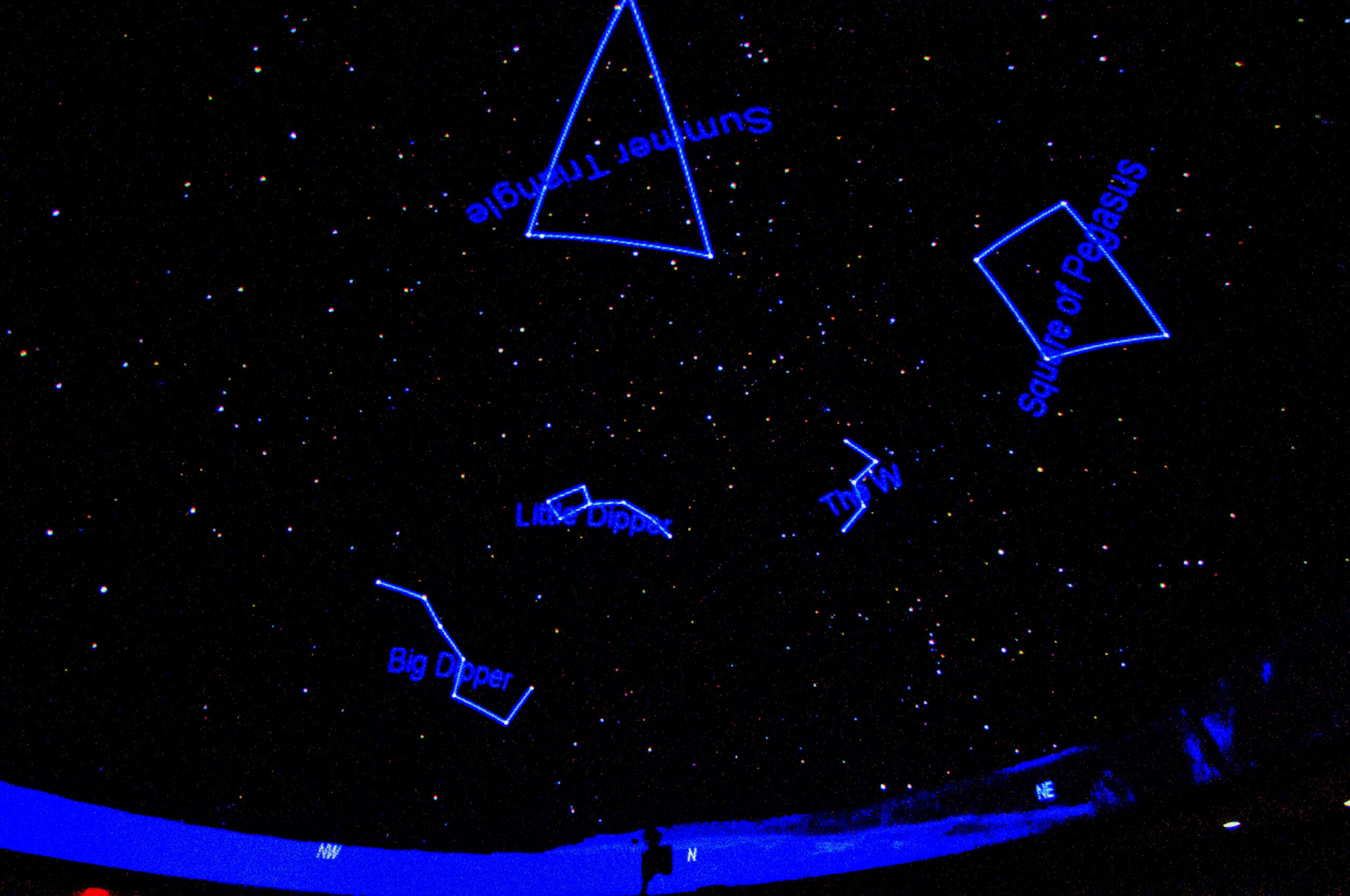In the sky, there are so many stars you can’t possibly see them all—not even with a telescope. So how do we remember which stars make up which constellation? Some constellations, like Ursa Major, are easy to spot because they form recognizable shapes—the Big Dipper or the Little Dipper, respectively. But other constellations are harder to distinguish because they’re made up of smaller groups of stars that don’t always form one distinct shape.
1) Leo
Leo is easy to find once you learn how! The constellation is shaped like a backwards question mark, with a bright star marking its heart. For amateur stargazers, Leo is easy to locate from mid-July through August. It’s actually visible in July as early as 9 p.m., but as night falls later in summer, you’ll have to wait until around 10:30 or 11 p.m. on clear evenings for Leo’s stars to come out.
2) Virgo
First, locate Spica in Virgo. Spica is a bright star (magnitude 1.0), so it shouldn’t be too hard to find. Look for a fairly straight line from Regulus in Leo, passing through Denebola in Leo, and ending at Spica. That will point you in the right direction. Once you have found Spica, draw an imaginary line between it and Arcturus in Boötes. This should lead you to M67, a dim open cluster of stars just below Arcturus that looks like a comet or fuzzy patch of light with your naked eye.
3) Orion
Looking northward into October’s dark skies, one of the most recognizable constellations is Orion, with its three-starred belt. Orion is a constellation that dates back to antiquity, though many cultures around the world have their own myths associated with these stellar objects. The three stars in Orion’s belt are Rigel, Betelgeuse and Bellatrix.
4) Cancer
Cancer is a constellation in Pisces. Its name means crab. The symbol of Cancer depicts a crab, and on its right claws it holds a sword. Its most notable star is Praesepe, known as The Beehive because of its appearance like a swarm of bees circling a hive. Cancer is located just east of Gemini, with Canis Minor and Hydra at its western edge. It is visible from latitudes between +90° and -90°.
5) Ursa Major
Also known as The Great Bear, Ursa Major is one of most easily recognizable constellations in night sky. The seven brightest stars in Ursa Major form a distinctive shape similar to that of a large pan or bowl. This constellation lies on its side in relation to all of the other stars, with its tail curled over on itself toward its back legs.
6) Cassiopeia
From mid-northern latitudes, Cassiopeia is visible throughout winter. Look for its distinctive W shape, with five stars forming a large curve or W shape, with one star sitting in one of two spots: either on top of or below (east or west) of that curve. The Greek letters Alpha through Eta, representing various spellings of Cassiopeia’s name, form an easily identifiable pattern that sits just above it.
7) Taurus
This is one of first constellations you’ll be able to see if you live in a sufficiently dark sky area. Look for what looks like a three-star belt in our night sky, then look directly below it for two stars that make up the head of Taurus. The four stars that make up its legs are nearby.
8) Canis Major
Canis Major is one of 88 constellations recognized by modern astronomers. Its name translates as Big Dog in Latin, but its origins are unclear. Canis Major lies between Bootes, Orion, Lepus and Canis Minor. It can be seen in both hemispheres; it’s circumpolar from most northern latitudes.
![]()
